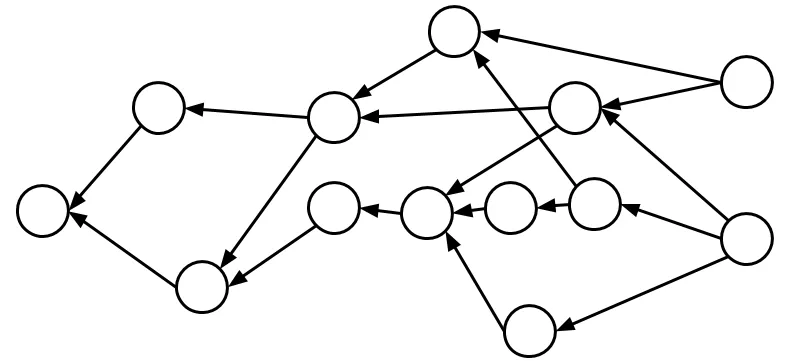Key Takeaways:
- How are BlockDAGs and blockchains different?
- DAGs provide more opportunities but also have disadvantages.
- Can the technologies be partners rather than oppose each other?

YEREVAN (CoinChapter.com) — Mathematically, Directed Acyclic Graphs (DAG) represent a graph with directed edges and no cycles (i.e., no path from a vertex back to itself), as seen in the graph below.

However, the paradigm found its implication right next to blockchain technology, claiming it could be useful in solving the blockchain trilemma. Thus, enters BlockDAG.
BlockDAG vs. Blockchain
Before jumping into the comparison, there are several terms in need of clarification. In the context of distributed ledgers, a blockDAG is a DAG whose vertices represent blocks and whose edges represent references from blocks to their predecessors.
The difference in structure provides opportunities.
Both the blockchain and the blockDAG are distributed ledgers. However, they have different structures. A blockchain represents a chain of transaction blocks in an unalterable, chronological order. Conversely, a blockDAG is a network of individual transactions linked to multiple other transactions.
There are no blocks of transactions in DAG networks. If blockchain is a linked list, a DAG is a tree, branching out from one transaction to another, to another, and so on.
Thus, a blockDAG provides a new outlook on validation, which could take the concept of decentralization a step further. In contrast with a blockchain’s multiple solutions to consensus, in a DAG, individual transactions provide validation for one another.
Also, the system eliminates the need for fees, as each transaction participant is automatically a miner and a validator (not to their own transactions). By doing so, blockDAG also cuts the need for a “miner army,” thus slashing energy consumption.
On the other hand, blockchain offers transparency and immutability, which is hard to achieve with blockDAG. It is also relatively well established, being the basis of cryptocurrencies.
Orphan nodes problem that a blockchain can’t solve
The blockDAG originated as part of the solution to the blockchain orphan rate problem. Orphan nodes are blocks mined simultaneously as another block but not accepted by the blockchain.
It’s well-established that a high orphan rate compromises security; the more honest blocks end up outside the longest chain due to spontaneous forks, the less secure the chain.
Is blockDAG the nemesis or a partner?
Blockchains, like any other technology, have their flaws.
One of them is the aforementioned blockchain trilemma. In short, it is the notion that it is not yet possible to have a fully decentralized blockchain that offers high scalability and boasts airtight security. Any blockchain technology sacrifices at least one in favor of the other two.

Bitcoin chose decentralization and security, while Ethereum opted for security and scalability, leaving decentralization in the rearview mirror. Can BlockDAG technology eliminate the need to choose?
BlockDAG and the blockchain trilemma.
As mentioned, BlockDAGs can eliminate the problem of orphan nodes. However, those are not the only obstacles to a more secure ledger. DAG connections can be more chaotic, thus, harder to keep track of. With no strict order and more attack vectors, validations throughout a blockDAG system can compromise security.
Also read: Relationship Between Blockchain and Cryptocurrency.
The decentralization and scalability sides of the trilemma receive a massive boost with blockDAG, but it is hard to preserve consistency in the system.
Hence, a blockDAG might not stand alone, being considered a “solution” or “new protocol” in and of itself. Instead, a blockDAG is a framework for devising consensus protocols that may (or may not) be as secure and more scalable than chain-based protocols.


